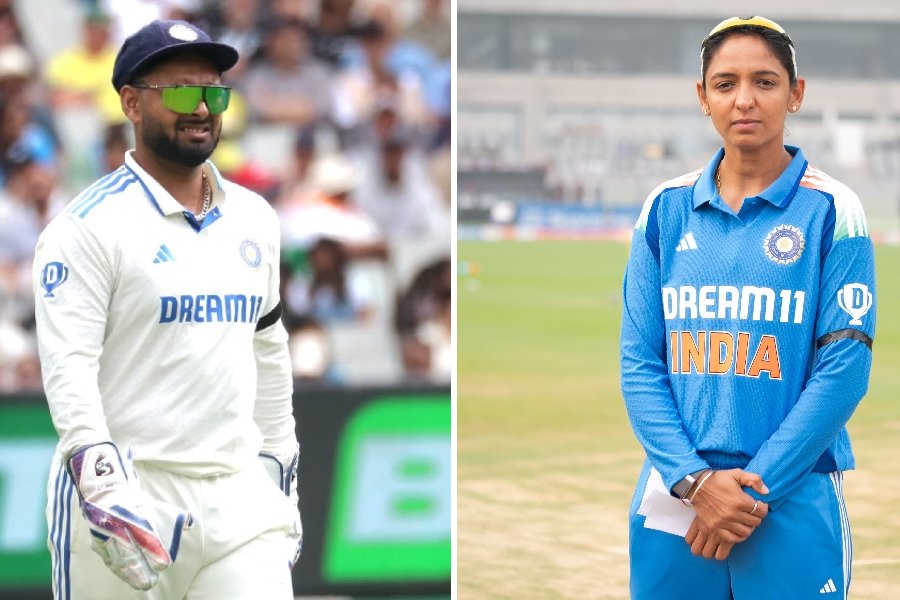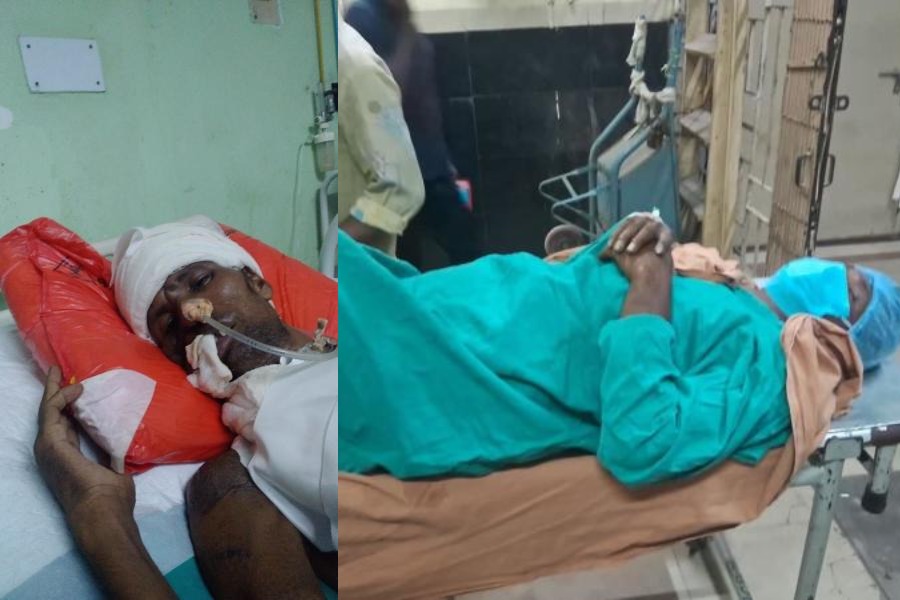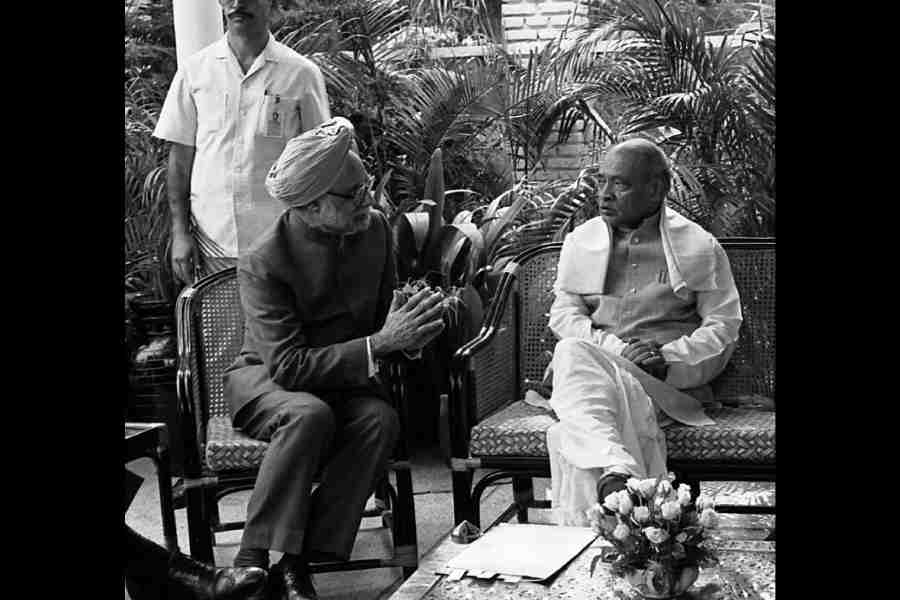Thrissur in central Kerala is gearing up for the state’s hottest contest in the upcoming Lok Sabha polls. This follows the Bharatiya Janata Party’s desperate efforts to win Thrissur at any cost and break the jinx of the party’s constant failure to win even a single seat from Kerala. For many years, the BJP’s national leadership has been baffled about why it continues to draw a blank in Kerala despite the jump in its vote share and the Rashtriya Swayamsevak Sangh having the country’s highest number of daily shakhas — over 5,000 — in the state after Uttar Pradesh that has 8,000. Even Gujarat has only 1,000 daily shakhas. Fielding film stars like Suresh Gopi, technocrats like the ‘Metro Man’, E. Sreedharan, cricketers like S. Sreesanth, bureaucrats, authors, and former police chiefs as candidates have proved fruitless for the BJP.
The National Democratic Alliance’s recent electoral performance in Kerala has been even worse. The 2021 assembly elections saw the NDA losing its first and only seat — Nemom — it won five years ago back to the Communist Party of India (Marxist). Its combined vote share from the state’s 140 constituencies also fell from 14.96% in 2016 to 12.4% in 2021. The NDA had also drawn a blank in the 2019 LS polls. The Congress-led United Democratic Front grabbed 19 of the 20 seats, and the remaining one went to the CPI(M)-led Left Democratic Front. However, the NDA had the consolation of its vote share increasing from around 10.3% in 2014 to 15.6% in 2019.
The BJP’s ‘Operation Thrissur’ became explicit when Prime Minister Narendra Modi made his second high-profile visit within a fortnight to the district known for its temples and festivals. If his first visit to the city on January 3 was to attend a mega women’s meet that was spiced with a grand road show, the second, on January 17, was to attend the wedding of the daughter of the actor-politician, Suresh Gopi, at the Sree Krishna temple in Guruvayur. Though Gopi is tipped to be the BJP’s Lok Sabha candidate, once again, from Thrissur, Modi’s frequent visits — one more is likely before the election — to the district and to its temples have even led to speculations that the prime minister himself may contest from there.
To thumb its nose at Modi, the Congress plans to launch its electoral campaign from Thrissur by the party president, Mallikarjun Kharge. The rising electoral heat in Thrissur is evident as it is the state’s only constituency where the names and the pictures of possible candidates of all three political formations have already been written on its walls by party workers much before their parties finalised their candidacies. Hitherto, only the Communist Party of India and the Congress have won from the Thrissur Lok Sabha constituency.
Thrissur is among only three of Kerala’s 20 Lok Sabha seats where the BJP secured nearly or just above 30% of the votes in the last elections. The other two are Thiruvananthapuram and Pathanamthitta. But it came second only in Thiruvananthapuram and ended up being third in all the remaining 19 seats. The former state BJP president and ex-governor of Mizoram, Kummanam Rajasekharan, topped among the BJP candidates in terms of vote share — 31.30% — in Thiruvananthapuram. He was followed by the present state chief, K. Surendran, in Pathanamthitta (28.97%) and Gopi in Thrissur (28.2%).
Why is the BJP focussing more on Thrissur than the other two seats that gave its candidates slightly more votes? It is more out of desperation than anything else. For a long time, the capital, Thiruvananthapuram, used to have the sangh parivar’s strongest electoral presence. In the 1984 Lok Sabha elections, P. Kerala Varma Raja, a Hindu Munnani candidate in Thiruvananthapuram, became the first ever sangh parivar representative to win more than one lakh votes — 19.8% — in any election in Kerala. This surprised the state, which has traditionally been totally polarised between the two rival fronts, the LDF and the UDF. Ever since then, BJP candidates have registered their highest vote share in Thiruvananthapuram. The BJP fielded a good candidate in O. Rajagopal, a former Union minister, in 1999 and 2004 when its vote share crossed 20% for the first time and neared 30% the next time. But he too ended third on both occasions. In 2014, thanks to the Modi wave, it appeared that Rajagopal would become the BJP’s first Lok Sabha member from Kerala but he fell short by less than 2% votes behind the winner, the Congress’s Shashi Tharoor. However, for the first time in Kerala, the BJP came second in a Lok Sabha constituency with a record 32.32% votes, pushing the LDF to the third position. In 2016, the then 87-year-old Rajagopal made history by becoming the first from the BJP to win a seat in the state assembly. In 2019 though, the BJP came second again with 31.30% of the vote share, lagging far behind Tharoor’s 41.19%.
With this defeat, the BJP seems to have lost hope in Thiruvananthapuram, which has now become Tharoor’s fortress. The charismatic former diplomat and author has now completed a hat-trick here, with his popularity cutting across political or religious divides. Even the BJP’s Rajagopal publicly stated recently that Tharoor is unbeatable. Tharoor is almost certain to contest again from Thiruvananthapuram, and the CPI, which has traditionally contested the seat, is struggling to find a suitable candidate against him.
The 2019 defeat dashed the BJP’s hopes of reaping dividends from the mass movement it led against allowing women of menstrual age to enter the Sabarimala Ayyappa shrine. The BJP was particularly shocked in Pathanamthitta where its state president, Surendran, ended up being third. The Sabarimala shrine was located in the constituency and the poll was held at the height of the movement that Surendran spearheaded.
This has left the BJP with only Thrissur to make one more attempt. The BJP expects that Modi’s personal presence, along with the party’s traditional votes and the non-political support for Gopi, Malayalam cinema’s one-time action hero, will ensure it the critical mass to win in Kerala’s ‘cultural capital’. Thrissur houses Kerala’s most prominent cultural institutions like the Sahitya Akademi, the Lalit Kala Akademi and the Kerala Kalamandalam, the state’s legendary performing arts school. Though Gopi was relegated to the third position in the 2021 assembly elections in Thrissur, he secured for the NDA a record vote share of 31.30%, much higher than the 19.46% in 2016.
Besides projecting the Modi-Gopi factors, the BJP is assiduously cultivating the Christian community in Thrissur. It is the second-largest constituent — 24.27% — in Thrissur’s population, followed by Muslims (17.07%). The BJP has been wooing Kerala’s Christians for some time now; the latest round was held last Christmas when Modi hosted about 100 top clerics from different Christian denominations in his residence in Delhi. This kicked up a controversy in Kerala, with the clerics getting slammed for not raising with Modi the issue of growing atrocities against Christians in the country, including in Manipur. The BJP has been backing the Christian clergy in their standoff with the Muslims on controversial issues like the love jihad.
Gopi and his family recently visited the Our Lady of Lourdes Metropolitan Cathedral in Thrissur and presented a golden crown to the Virgin Mary. Though the actor-politician mentioned it as an offering made on behalf of his daughter before her wedding, the political message was hard to miss.
M.G. Radhakrishnan, a senior journalist based in Thiruvananthapuram, has worked with various print and electronic media organisations










